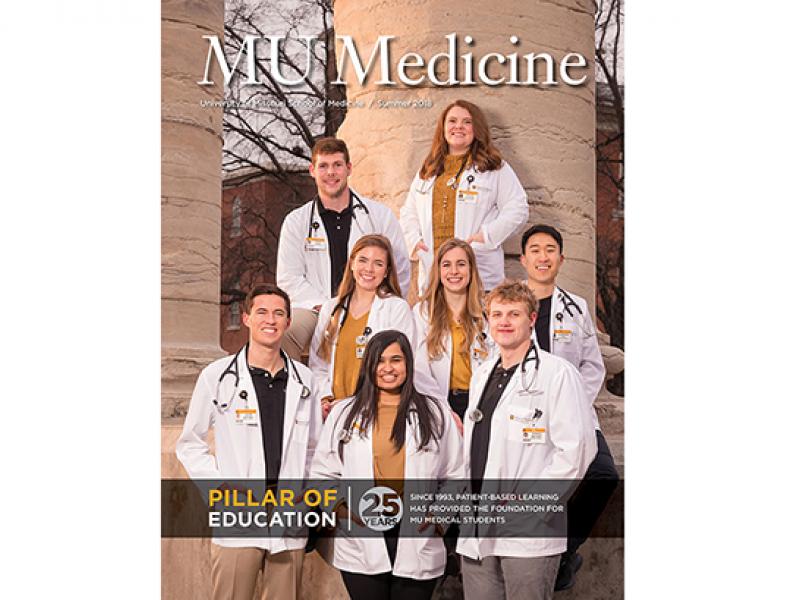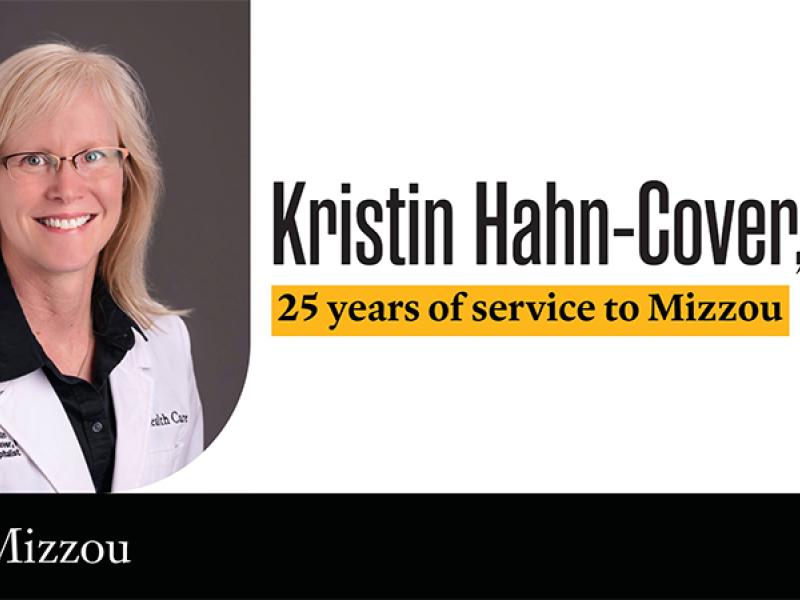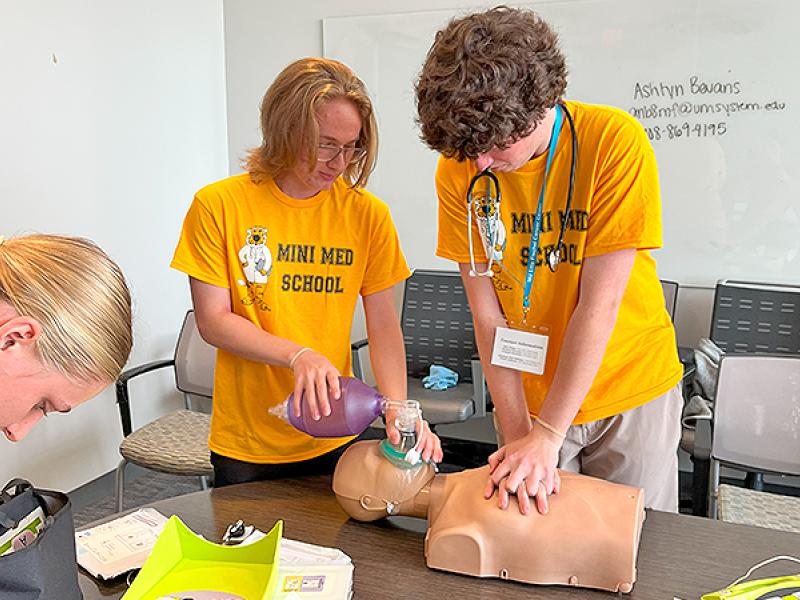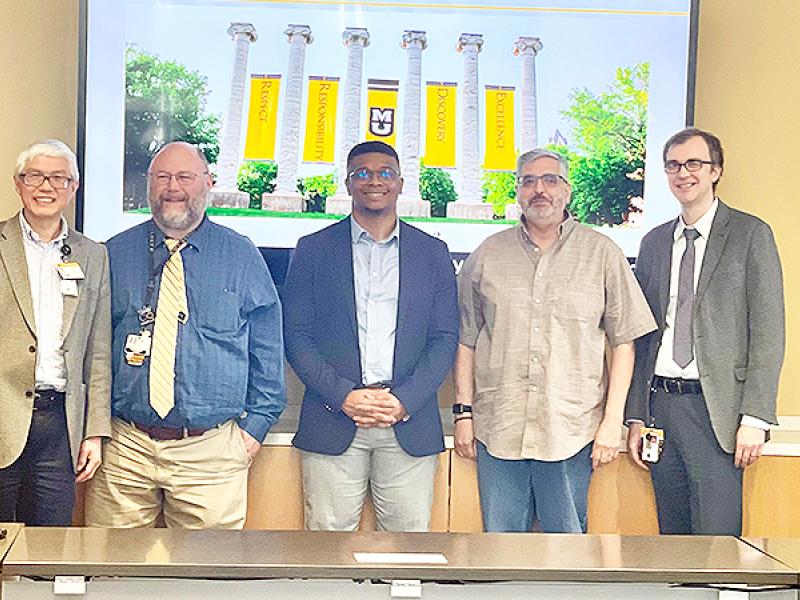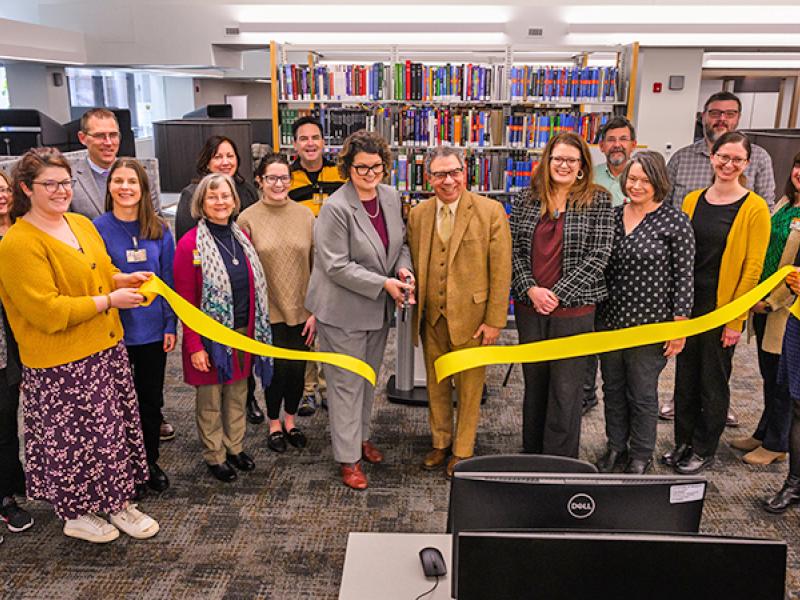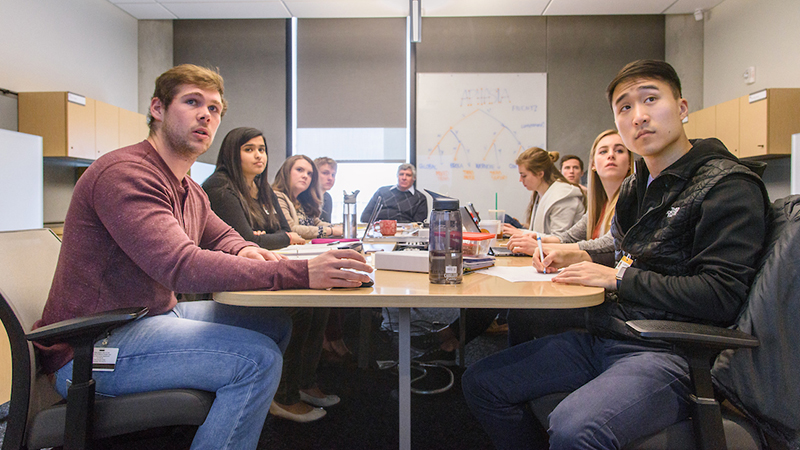
It is Monday morning, and the eight first-year University of Missouri medical students seated around the table have just been introduced to their latest patient.
It is a man with changes in his thinking ability. The students have access to his symptoms and medical history, but which details are valuable tidbits among all the red herrings? The childhood accident, an illness years ago, ringing in his ears — do any of them matter?
The group’s faculty facilitator, Luis Polo-Parada, PhD, knows but isn’t saying much. In fact, once the students start digging into the case, he doesn’t say a word for the first 12 minutes. When he does speak, it is often to redirect a conversation wandering too far in the wrong direction. Sometimes Polo-Parada plays the devil’s advocate — the devil, in this case, being an insurance company — rejecting a requested lab test on the grounds that the students have not justified its necessity.
“My role is to guide the students, not control the students,” says Polo-Parada, the course director of the neurophysiology block. “Sometimes I’ll let them get to a certain point and then I’ll ask the question, ‘But have you considered this?’
“I love the ability to interact with the students and not only to present basic knowledge but to relate it to clinical aspects. There is often a big gap there.”
This is patient-based learning (PBL), the curriculum the MU School of Medicine has used for the last 25 years to train its first- and second-year students. It is nothing like a traditional lecture model in which the professor is the fount of information and the students dutifully take notes.
In PBL, students are assigned revolving leadership roles. Mary Murphy, this week’s quarterback, leads the discussion. Chance Walker, the dictionarian, provides definitions to unfamiliar medical terms. Pooja Nair, the scribe, pecks away at her computer, listing the man’s problems and potential diagnoses on the screen at the front of the room.
No guess is too wild at this point.
The session ends with each student assigned one case-related objective to research. The students will spend two to four hours preparing for the 10-minute presentation they will give to the class on Wednesday. Jake Hartwig, a newlywed, will have to hustle, as he is expected on the couch with popcorn in hand at 7 p.m. for “The Bachelor.”
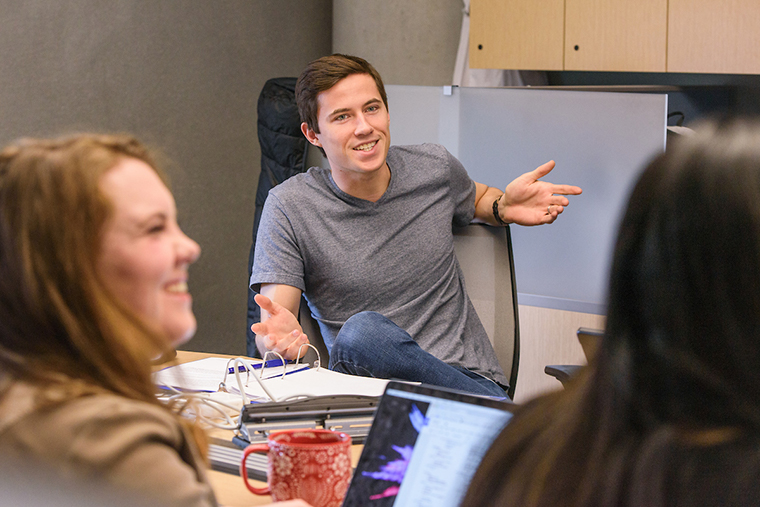
Solving the mystery
It is Wednesday morning, and judging by his polished breakdown of the patient’s written mental status exams, Hartwig got his homework done before relaxing with his wife. As soon as he finishes speaking, Hartwig tears open a package of Pop-Tarts and heads straight for the classroom’s coffee maker, so perhaps some of the polish was applied at the expense of breakfast this morning.
As the students report on their research, they reveal a bit about themselves.
Hartwig and Taylor Ross, another newlywed, mix wedding photos into their PowerPoint slides. Walker incorporates humor into his findings on the impact of recreational drugs on the brain, concluding with, “Don’t do drugs.” Ryan Akin sprinkles in sports references to his examination of memory. Miranda Eubank’s slides are decorated with purple flowers. Murphy, Clarence Chu and Nair include memes, memes and more memes to break up the highly scientific material they are conveying.
After each presentation, the students applaud politely. This is their fifth week together, and they have developed a casual rapport. After eight weeks, there is a week of exams and a week off. Then a new block starts with the students shuffled into different groups.
After two years, each student will have worked closely with nearly half of his or her class and will have learned — and retained — knowledge in a way that has kept MU above the national average in board scores for more than two decades.
“How you learn the knowledge is a lot more self-driven,” Ross says. “In undergrad, I felt like everything was a lecture, and everything you needed was in that. Whereas now, you have to look for the information and don’t always know what you need.”
Not every objective the students research is relevant to this week’s case, but each one helps the students build a base of science knowledge. As the wilder diagnostic guesses about the patient’s condition are eliminated from consideration, the students, with gentle nudges from Polo-Parada, start to hone in on a brain disease causing dementia.
When they finally get a look at a key test result, they identify Alzheimer’s disease as the most likely diagnosis.
With the mystery solved, the students learn what happened next to their patient.
Then they are assigned another set of presentations to be given Friday. After class, Polo-Parada joins the 15 other faculty facilitators in a meeting with MU Health Care neurologist Joel Shenker, MD, PhD, a clinician who helps lead the neurophysiology block of PBL. He treated the actual patient discussed this week and wrote the case for the PBL student sessions after receiving permission from the patient and family.
Shenker discusses the important points of next week’s case with the facilitators, many of whom are basic scientists. He reminds them a special guest will be here Friday.
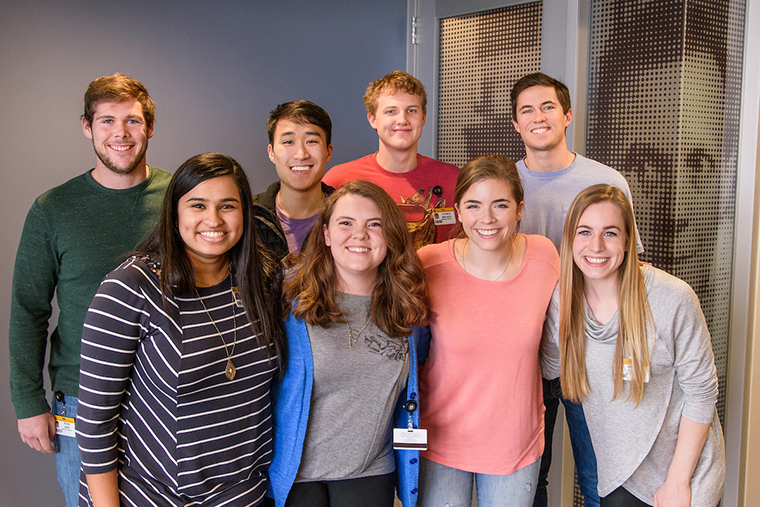
Human touch
It is Friday morning, and the smell of bacon fills the fifth floor of the Patient-Centered Care Learning Center. It is tradition for quarterbacks to cook or buy breakfast for their classmates on Fridays. Murphy picks up treats from Dunkin’ Donuts on the way to class.
This round of student presentations focuses specifically on dementia — from diagnosis to medication options to pathology. Afterward, the results of an autopsy are shared.
The final business of the week takes place downstairs in the PCCLC’s second-floor classroom. All the first-year medical students gather as Shenker reviews the key points of the case. He then turns the floor over to the special guest.
The patient’s real name is revealed — again, he and the family had given permission to do so years earlier. His wife stands before the students now, dressed in purple, the color of Alzheimer’s awareness. She holds up a poster board that has the couple’s engagement photo next to another one in the same pose taken in the last year of his life. She asks how many of them have been affected by Alzheimer’s. About half the students raise their hands.
She speaks bluntly — but not without humor — about the tragedy of watching her brilliant husband deteriorate, losing pieces of him like a peeled onion, until he forgot her name and no longer wanted to give her a kiss.
“There is nothing rewarding about being a caregiver,” she says flatly.
But she filled that role. She tells the students that she gave up her job, reorganized their home so her husband could navigate it and ultimately had to care for his basic needs as if he were an infant. Around the room, there are some moist eyes.
At the beginning of the week, the students learned about a patient who was the sum of his symptoms, a scientific mystery on paper. By the end, they got to know a person and his caregiver, seeing the human consequence of the five-syllable words on a medical chart.
The students are training for complex jobs that will require them to be detectives, scientists and social workers and to rely upon curiosity, intelligence and compassion. In one week of PBL, they practiced each part of that job description and prepared themselves for the full spectrum of their future.


